



1170 You are everything, and everything is you? Look me in the eye, boy, you are quarterback of this team until I tell you different? In Apr. William I of Scotland visits Henry II's court at Windsor, then visits his estates in Huntingdon, then on June 14 attends the coronation at Westminster of Henry II's eldest son Henry the Young King (1155-83) as official English successor, giving him personal homage on June 15; the attempt of the archbishop of York (backed by Henry II) to do the anointing causes archbishop of Canterbury Thomas Becket (b. 1118) to get pissed-off and obtain the support of Pope Alexander III and Louis VII in a showdown, causing Henry II to exile Becket, but Henry II repents and backs down, and formally reconciles, and Becket returns to Canterbury on Dec. 25 and excommunicates three pro-Henry bishops, who flee to Henry II in Normandy, causing him to go into a rage, uttering the soundbyte: "Will no one rid me of this troublesome/meddlesome/turbulent priest?" (probably not, but he should have?) and/or "What! Shall a man who has eaten my bread... insult the king and all the kingdom, and not one of the lazy servants whom I nourish at my table does me right for such an affront?", causing four of Henry's Norman baron knights incl. Hugh de Morville (1155-1204) (Fr. "dead village"), William II de Tracy (-1189) (Gael. "fierce, warlike"), Reginald Fitzurse (1145-73) (Gael. "son of the bear"), and Richard le Bret(on) (de Brito) (Fr. "the brute") to take him literally, swear an oath to kill him, and cross over to England to find him, apparently without the ing's knowledge; on the way to Canterbury they stop at Bletchingley Castle to see Earl Roger the Good de Clare (1115-73), grandson of Earl Gilbert de Clare (-1117) (an expert on hunting accidents?); on Dec. 29 (5 p.m.) they find Becket in Canterbury Cathedral at Vespers, demand that he lift the excommunications, and when he refuses they begin arguing with him and try to arrest him, and when the 6'2" dude (compared to an avg. height of 5' back then) resists, they murder him on the altar, with Fitz Urse drawing first blood, knocking off the crown of his head and spilling his blood and brains all over the floor (in the shape of a rose and lily?), after which they all close in and finish him off, then stir the brains with a sword to be sure he's dead before leaving; too bad, the locals immediately steal samples of his blood in cloths and vials, then announce miraculous cures within days, turning him into a martyr, causing anger against the king and assassins to spread throughout Europe, all to the chagrin of kingy back in Normandy, who is called the new Nero and Judas, holing-up in his chamber for three days sans food while sending emissaries to the pope to declare his innocence and promising to perform penance; Pope Alexander III uses the opportunity to save Louis VII from Henry II's wrath; Becket is hastily entombed in a crypt without bathing (since he's bathed in martyr's blood), and the cathedral soon becomes a center of pilgrimage for England's new martyr of church-state relations, with 2M+ words written about his miracles; the word "canter" comes into use from the easy Canterbury gallop which medieval pilgrims use to ride to the town; Becket is discovered to be wearing an itchy-scratchy goat-hair shirt beneath his sacerdotal robes along with breeches of the same that "swarmed with vermin", cinching his martyr status; the four bad barons do lifetime penance by becoming Crusaders in the Holy Land. On May 1 at the invitation of Dermot MacMurrough a party of 10 Norman soldiers and 70 archers led by Raymond le Gros land at the promontory fort in Baginbun, Wexford, Ireland S of Fethard-on-Sea on the Hook Head Peninsula, soon joined by Hervey de Montmorency and building a vast rampart that survives to modern times; finding the backward Irish still fighting with slings and stones, they repel a force of 3K Norsemen and Irish from Waterford; on Aug. 23 Strongbow lands with an army of 1.2K, combining forces and taking Waterford on Aug. 25; the same day Strongbow marries Dermot MacMurrough's daughter (by his 2nd wife Mor O'Toole) Aoife (Eva) MacMurrough of Leinster (1145-88) in the ruins of Waterford. On Aug. 24 (Fri.) Eyptian vizier Saladin suppresses the Shiite call to prayer and orders the four Rashidun caliphs mentioned in the sermon (Khutba). Sick of Henry II's infidelity, Eleanor moves to Poitiers, France; Henry II assigns Brittany to his son Geoffrey to hold of his brother Henry the Young King (b. 1155), assigns Normandy, Anjou, and Aquitaine to his son Richard Lionheart to hold directly of the French king, and assigns no lands to his youngest son John, causing him to be called "Lackland", even though daddy later conquers Ireland for him; the premature taste, combined with daddy's bad rep over what he did to Becket backfires and causes his sons to become rebellious, becoming known as the "lion's brood". Ruben II is entrusted to the care of Patriarch Nerses IV Shnorhall of Hromgla, who prepares to flee with him to Antioch; too bad, his uncle Mleh has him assassinated in Hromgla, and Mleh (Meleh) I (1119-75) becomes lord #3 of Little Armenia (untl May 15, 1175). The Byzantine acquisitions in Italy and Dalmatia cause a war with Venice (ends 1177); all Venetian traders in Constantinople are arrested and their goods seized, but the threadbare Byzantine fleet is unable to do much. Al-Mustanjid dies, and Al-Mustadi (1142-80) succeeds him as Abbasid caliph (until 1180). Leon and Castile go to war for 10 years (until 1180). Welsh prince Madoc ap (Madog ab) Owain Gwynedd sails from Abergwili, Wales across the Atlantic Ocean, and lands somewhere in the Florida peninsula or the West Indies, founding a settlement?; several years later he returns to Wales, leaving 120 men behind; he returns in 1190 and finds them all annihilated by natives, then dies soon after? The financial inquiry known as the Inquest of Sheriffs results in strengthening the English exchequer. Pope Alexander III establishes the Rules for the Canonization of Saints - just in time to fast-track Becket? In this decade the Chivalric (Fr. "horsemanship") Ideal takes over European and British noble society, with everybody wanting to win his spurs as a knight. The guild of masters, germ of the U. of Paris is recognized by Louis VII of France, and the French intellectual center begins shifting from Chartres to Paris as its humanistic bishop (1176-80) John of Salisbury (1115-80) and main brain man Thierry (Theodoric) of Chartres (1150-) get long in the tooth; at first the univ. movement is controlled by the Church, but it's just a matter of time before it becomes a hotbed of heresy, and ultimately one of the Church's greatest enemies - monkey see monkey do? Architecture: The Bridge of San Zaccaria in Venice is built, becoming the first stone bridge on the Grand Canal. Nonfiction: Moses Maimonides (1135-1204), Mishna (Mishneh) Torah (Heb. "repetition of the law") AKA Sefer Yad HaHazaka (Book of the Strong Hand) (14 vols.) (1170-80) (Hebrew letters Yod + Dalet = 10 + 14 = Yad = "hand"); written while living in Egypt; his magnum opus; only Medieval Jewish work containing all details of Jewish observances incl. when the Temple was in existence; "A person who first reads the written Law [Pentateuch] and then this compilation will know the whole oral Law without needing to consult any other book"; makes him the #1 Jewish scholar of the day, although it pisses-off other rabbis for attempting to displace the Talmud, and for his assertion that he who studies the Law is higher than he who merely obeys it. Music: In this decade French composers Leoninus (1135-1201), Magister Perotinus et al. begin creating the Ars Antiqua (Ars Veterum) (Ars Veterus) style of polyphonous sacred music of the Notre Dame school (until 1310). Poetry: Chretien de Troyes (1144-90), Chevalier de la Charette (Knight of the Cart); a romance of courtly love in which Lancelot du Lac beds King Arthur's wife Guinevere (the earliest vers. of the Lancelot story) - it's the kind of jealousy that makes you feel you love them so much? Births: German poet Hartmann von Aue (d. 1210) in Swabia. Spanish priest and Dominican Order founder (St.) Dominic (Domingo de Guzman) (d. 1221) in Calaruega, Castile; raised by a priest uncle; lies to go barefoot; feast day: Aug. 4. German "Under der Linde" #1 Minnesinger Walther von der Vogelweide (Ger. "of the bird meadow") (d. 1230) in Bavaria or Austria; first German poet to write nationalistic patriotic poetry. French Latin king of Jerusalem (1210-12, 1217-25) and Latin emperor of Constantinople (1229-37) John of Brienne (d. 1237); husband (1210-2) of Marie de Montferrat (1191-1212); father of Yolande II de Brienne (1212-28). Danish king (1202-41) Valdemar (Waldermar) II (the Conqueror) (the Victorious) (d. 1241) on May 9; 2nd son of Valdemar I (1131-82) and Sophia of Polotsk; husband of Queen Dagmar (Margaretha of Bohemia) and Berengaria of Portugal (daughter of Sancho I of Portugal). Italian Roman Catholic Cardinal Giovanni Colonna (d. 1245). Indian Hindu Sanskrit poet Jayaeva (Jaidev) (d. 1245 in Kenduli Sasan, Odisha (Mithila of Bihar?). Italian rabbit-counting mathematician Leonardo (OG "lion bold") Fibonacci (Filius Bonaccii) (Leonardo Pisano) (Leonardo da Pisa) (d. 1250) in Pisa; son of Bonaccio. Deaths: English hermit St. Godrick of Finchale (b. 1065) on May 21 in Finchale, Durham County. Brandenburg margrave (1150-70) Albert the Bear (b. 1100). English Canterbury archbishop (1162-70) Thomas Becket (b. 1118) on Dec. 29 in Canterbury (murdered in the cathedral); sainted in 1173 - was he wearing his work clothes when he died? Italian Latin patriarch of Constantinople #1 (1204-11) Thomas Morosini (d. 1211) (b/ 1175?).
1171 In May Ireland's deposed king Dermot MacMurrough dies, and Strongbow claims the throne of Leinster by marriage to his daughter, conquering a strip of territory from Dublin to Cork and threatening the establishment of an independent Norman kingdom in Ireland; on Oct. 17 Henry II, with papal sanction lands in Waterford to assert his supremacy, and Strongbow submits without a fight, swearing loyalty to Henry II, who holds his court in Dublin, making it a dependency of the English city of Bristol next year; the Normans spread over Ireland except for W and C Ulster, intermarrying with the Irish and adopting their ways, language, and culture while retaining only nominal allegiance to Henry II; the English-ruled Pale in Ireland (Land of Ire) is established, where strong Norman barons (the Fitzmaurices, Carews, Gerards, Davids, and Barries) outvote weak English justiciars (with no English garrisons) (under an English viceroy with orders from Henry II to be fair to the natives, pissing-off the Normans?) to gangbang the Irish for fun and profit without establishing any organized govt.; by the end of the 15th cent. it is reduced to an area on the E coast from Dalkey (S of Dublin) to Dundalk (N of Drogheda), with the W boundary from Leixlip N to Kells. In Sept. Henry II confiscates Caerlon in Wales from Iorwerth ap Owain Wan; next year William Fitz Robert, 2nd Earl of Gloucester and his men kill his son Owain, causing him and his surviving son Hywel to rebel against the Normans. On Sept. 12/13 caliph (since 1163) Adhad (al-'Adid) (b. 1150), the last Fatimid caliph dies, ending Shiite rule of Egypt, with control reverting to the Abbasid caliphs in Baghdad under true blue Sunni Saladin, who doesn't like the suzerainty of Nureddin (Nur ad-Din) of Syria, causing them to plan a final battle; on Sept. 17 (Fri.) (Muharram 567) Saladin orders the Abbasid caliph declared in the Fri. sermon (khutba) in Fustat and Cairo, and takes the title Muhyi Dawlat Amir al-Mu'minin (Reviver of the Empire of the Commander of the Faithful), signaling the replacement of the Fatimids by the Ayyubids, while the remaindsof the Fatimid regime and Ismailism are ruthlessly exerminated, causing the Nizari Ismailis AKA the Assassins to plot a comeback; meanwhile in Sept. Jewish brain man Maimonides becomes Ra'is al-Yahud (Head of the Jews) (until 1173); meanwhile Nureddin sieges Jerusalem, sans Saladin's aid, who hopes the Crusader kingdom will serve as a buffer between Egypt and Syria, and ditto happens in 1173. In Sept. after Serbian grand prince Stefan I Nemanja sides with them in the hopes of gaining independence from Byzantine rule, the Venetians incite the Slavs of the E Adriatic coast to rebel also, and hire a German fleet to replace their navy, conquering Ragusa and Chios from the Byzantines. William II the Good of Sicily begins his personal rule of Sicily and Naples, preferring his palace pleasures in Palermo to military adventures while backing the papacy and the Lombard cities against pesky Frederick I Barbarossa. Alfonso II the Chaste of Aragon conquers Teruel and Caspe, setting his sights on Valencia. Several Jews are burned in Blois, France on the charge of using Christian blood in Passover rites. Architecture: Roman Catholic bishop Berno of Mecklenburg consecrates the Cathedral of Schwerin, and holds the first synod; meanwhile Prince Pribislav of the Obotrites, who has been converted back to pro-German Roman Catholicism founds the Cistercian Monastery of Doberan, which becomes a center of evangelism of pesky Slavic pagan Obotrites. The Bank of Venice begins allowing exchanges of accounts among clients via bookkeeping operations. Deaths: Austrian minnesinger Dietmar von Aist (b. ?).

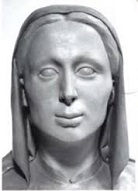
1172 What's new, pussycat, whoa-whoa-whoa? On Feb. 2 now that they have their martyr of the millennium,the Second Synod of Cashel (first in 1101), convened by Henry II (who is not present) is held under English occupation, and the Irish acknowledge Henry's sovereignty, and agree that their church needs reformation, with Irish prelates inundating the pope with letters recommending Henry II in hopes of protection against Strongbow; (St.) Laurence O'Toole (1128-80) is made papal rep. to Ireland; meanwhile Richard Lionheart is created duke of Aquitaine. On Mar. 4 Stephen III (b. 1147) dies, and next Jan. 13 his Constantinople-educated brother Bela III (1148-96) (a descendant through his mother of Harold II of England) becomes king of Hungary (until Apr. 23, 1196), with his French wife (since 1169) Agnes (Anna) of Antioch (Chatillon) (1154-84) (daughter of Crusader Raynard de Chatillon) as queen consort (until 1184), introducing French culture into Hungary along with Cistercian monks from Burgundy. In Mar. Anglo-Norman landowner Hugh de Lacy, 4th Baron Lacy (1134-1186) is granted control of Meath and Dubin Castle, becoming the first Norman viceroy of Ireland (again in 1179 and 1180); the prior lord of Meath, Breifne king Tigherman O Ruairc gets pissed-off, and meets Lacy on the Hill of War in Meath, where he is ambushed and decapitated, his head hung over the gate of Dublin Castle and later sent to Henry II. Bohemond III of Antioch invades Armenia after it allies with Nureddin. After intercession by a Carthusian monk, Henry II and Pope Alexander III reconcile, and Henry II is cleared of involvement in Becket's murder, but is ordered to do penance before the Cathedral of Avranches in Normandy, and rescind the 1164 Constitutions of Clarendon, restoring all rights and property of the Church, reinstituting "benefit of clergy" (privilegium clericale) in England (until 1827); for the rest of the Middle Ages, English clergymen can get out of punishment for their felonies (except treason) by getting their cases transferred to an ecclesiastical court and proving that they can read and write some Latin verses; however, they get branded in the brawn of the left thumb if not actually in holy orders; fines and whipping are later substituted when the public looks the other way - no wonder everybody hates lawyers? Stefan I Nemanja of Serbia joins the anti-Byzantine coalition of Venice, Hungary, and the HRE, and incites the Serbian citizens of Ravno to refuse passage to Byzantine ally Henry the Lion of Saxony; Kilij Arslan II of Rum makes a pilgrimage to Jerusalem, and meets with Henry the Lion near Tarsus, embracing and kissing Henry and claiming that they are blood cousins because he descends from a daughter of Svyatoslav II. Il-Arslan dies, and his son Alaeddin Takish (-1200) becomes the shah of Khwarezm (until 1200). The Venice Grand Council restricts the powers of the doges. The Almohads capture Murcia, followed by Valencia when ibn Mardanish dies, completing their absorption of Muslim Spain. Architecture: The Palazzo del Podesta (Municipal Palace) in Padua, Italy (23 mi. SW of Venice) is begun (finished 1219); it is restored in the 16th cent. by Andrea Moroni, becoming Moroni Palace. Nonfiction: Maimonides (1135-1204), Epistle to the Jews of Yemen; how to deal Muslim oppression. Wace (1115-83), Roman de Rou; chronicle of the Norman dukes, commissioned by Henry II in 1160. Births: Jerusalem queen (1190-1205) Isabella of Jerusalem (d. 1205) in Nablus; daughter of Amalric I of Jerusalem and 2nd wife Maria Comnena (grandniece of Byzantine emperor Manuel I Comnenus); stepdaughter of Balian of Ibelin; mother of Maria of Monteferrat (1192-1212). Births: Latin emperor of Constantinople #1 (1204-5), count of Flanders (1194-1205), count of Provence (1195-1205) Baldwin I of Constantinople (d. 1205) in July; son of of Baldwin V of Hainaut (1150-95) and Margaret I, Countess of Flanders (-1194) (sister of Count Philip of Alsace); husband of Marie of Champagne (1174-1204); brother of Henry of Flanders (1176-1216); father of Margaret II of Constantinople (1202-80). French queen of Jerusalem (1190-1205) Isabella I (d. 1205) in Aug. in Nablus; daughter of Amalric I (1136-74) and 2nd wife Maria Comnena (1154-1217) (grandniece of Byzantine emperor Manuel I Comnenus); wife (1183-90) of Humphrey IV of Toron (1166-98), (1190-2) Conrad of Monferrat (-1192), (1192-7) Henry II of Champagne (1166-97), and Aimery (Amalric) of Lusignan (1154-1205). Deaths: Hungarian king (1162-72) Stephen III (b. 1147) on Mar. 4. Welsh prince Cadwallader (b. ?).



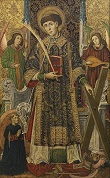

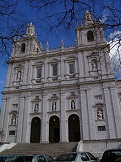

1173 The first influenza epidemic shakes Eur Eur Eur Eur Europe; the epidemic causes a mutiny of the Venetian navy, devastating it. On Feb. 23 St. Thomas Becket is buried in Canterbury and canonized by Pope Alexander III, insuring the wealth of Canterbury Cathedral, and making a pilgrimage there the thing to do, a Christian Mecca - chust chew on Chaucer? The Aquitaine Revolt of 1173-4 sees Henry II's Angevin Empire slide into civil war as his estranged wife Eleanor of Aquitaine (pissed-off at his adulteries) supports her sons Richard Lionheart and Henry the Young King and ally with Louis VII against him, fleeing to his court; William I of Scotland throws in with the rebels in exchange for a promise of the restoration of guess what Northumberland (after he inherited the title of Earl of Northumbria in 1152 and was forced to give it to Henry II in 1157), but is captured by a small English forces of mounted knights led by Henry II's chief justiciar (1154-89) Ranulf de Glanvil (Glanville) (Granvile) (-1190) at the Battle of Alnwick in Northumberland on July 13; Henry II takes control of Kenilworth Castle in the Arden Forest in Warwickshire to defend against the rebellious barons on both sides of the Channel; Louis VII attacks Normandy while William I invades England, but the support of the middle classes saves Henry II's cause; after becoming the first female Euro monarch to lead troops into battle, Eleanor is imprisoned (until 1183); on Aug. 10 in Rouen Henry II names Strongbow as royal justiciar of Ireland. Bohemia enters a period of dynastic conflict during which there are 10 rulers (until 1197). Boleslav IV the Curly (b. 1120) dies after seeing the section of Poland W of the Vistula River along the Baltic gobbled up by the Germans, and his 47-y.-o. brother Mieszko III the Old (1126-1202) becomes king of Poland, but his brutality pisses-off the nobility and causes them to conspire to throw the bum out in 1177. Alfonso II the Chaste of Aragon hands the county of Provence to his younger brother Ramon Berenguer IV (1158-81) (count of Cerdanya in 1162-8) (until 1181). The Venetians unsuccessfully attack Ancona. Saladin seizes Aden in Arabia. Nur ad-Din, allied with Kilij Arslan II of Rum takes Mosul. Alauddin Hussain dies, and his Persian-speaking son Mohammed (Muhammad) of Ghor (1162-1206) becomes ruler of the Ghurid Dynasty in C Afghanistan and gov. of Ghazni, going on to become the real founder of Muslim power in India. After floods cause a bridge to be built, the city of Amsterdam (originally Amstelredamme, "dam in the Amstel River") on the Amstel River in North Holland (modern-day pop. 866K/1.38M) is founded; in 1300 it is granted city rights, going on to become a major port. The Waldensians (Waldenses) (Vallenses) (Valdesi) (Vaudois) (originally the Poor Men of Lyons/Poverty/God) are founded by by wealthy merchant Peter Waldo (Valdo) (Valdes) (Waides) (Pierre Vaudes or de Vaus) (1140-1205) in Lyons, France, who takes the Bible passage "No man can serve two masters, God and Mammon" (Luke ch. 16) literally and gives away his property and preaches apostolic poverty as the way to perfection, condemning papal corruption and luxury along with Roman Catholic dogmas incl. Purgatory and Transubstation, accusing the Church of being the Harlot in the Book of Revelation ch. 17, disguising themselves as peddlers to spread their teachings and quickly spreading through the Cottian Alps, becoming the first to translate the New Testament into vernacular (Arpitan); in 1184 after visiting Pope Alexander III and the Roman Curia in 1179 to explain his fath, Waldo is excommunicated by Pope Lucius III in the Synod of Verona, and in 1215 the Fourth Lateran Council declares them heretical and begins persecuting them, causing them to flee to the mountains of N Italy; in the 16th cent. they merge into the Protestant Reformation. Architecture: On Aug. 9 the first stone of the 185.93-ft. (56.67m) 8-story (15, 6 x 30, 12 columns) white marble Gothic Leaning Tower (Campanile) of Pisa, the bell tower for the Cathedral of Pisa is laid; architect Bonanno Pisano (da Pisa) makes the mistake of using a mere 10-ft.-deep foundation, and in the middle of his work the ground shifts and the tower heels over, causing him to abandon the project, and ends up taking 177 years to finish (1372); the real architect is Diotisalvi (Deotisalvi) (Deustesalvet)?; despite a 5 degree lean it goes on to survive four earthquakes starting in 1280 because of the soft soil. The relics of Spanish Christian martyr St. Vincent of Saragossa (Huesca) (-304) are shipped by Portuguese King Afonso I Henriques from his shrine in Cape St. Vincent to the new Augustinian Romanesque Monastery of Sao Vicente de Fora (begun 1147) in Lisbon, which ends up depicted on the Lisbon Coat of Arms; the monastery becomes the royal pantheon for the Portuguese Braganza monarchs, after which in 1582 it is remodeled in the Mannerist style by orders of Philip II of Spain, and in 1834 after religious orders are dissolved in Portugal, it becomes a palace for the archbishops of London, with Ferdinand II ordering the pantheon transferred to the old refectory. Inventions: Algebraic chess notation is invented by ?. Nonfiction: Thomas of Monmouth, The Life and Miracles of St. William of Norwich; bestseller about the ritual Jewish murder of a Christian in 1144 England. Births: Welsh prince Llywellyn (Llewellyn) (Llewelyn) (Gael. "like a lion") (the Great) (Fawr) (Llywelyn ab Iorweth) (d. 1240) in Gwynedd (N Wales); father of Dafydd ap Llywelyn (1208-46) and Gruffydd ap Llywelyn Fawr (1200-44). Deaths: English Norman knight Earl Roger "the Good" de Clare (b. 1115) in Oxon. Polish king (1146-73) Boleslav IV the Curly (b. 1120). Navarre-born Jewish world traveler Benjamin of Tudela (b. 1130) in Castile; leaves The Travels of Benjamin Tudela; claims that two Jewish workers hired to dig a tunnel on Mount Zion in Jerusalem on the ground floor of the Byzantine-era Hagia Zion church claim to discover King David's original palace, complete with gold crown and scepter, and decide it must be King David's Tomb, which incl. the Cenacle (Upper Room).





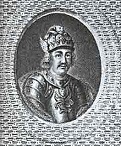
1174 In the spring William I of Scotland invades Northumbria, fights to a push, regroups in Scotland and invades again in June, fails to bring siege engines to take the castles, then sieges Alnwick Castle in early July while sending most of his army on raiding missions; on July 13 he is captured along with his best nobles in a surprise attack, then taken with his legs shackled under his horse to Falaise Castle in Normandy, France, and imprisoned; there he is forced to acknowledge Henry II as ruler of Scotland, along with the surrender of key Scottish fortresses and the provision of hostages in the humiliating Treaty of Falaise, and released on Dec. 8; the treaty formally declares Scotland's vassal status, making it a fief held of the English crown, and requires Scottish castles S of the Forth River to be garrisoned with English troops, beginning "a hundred years of rape and pillage" (Mel Gibson's 1995 film "Braveheart"). On May 15 Syrian sultan Nureddin (Nur ad-Din) (b. 1118) dies of fever in Damascus, and his preteenie son As-Salih Ismail al-Malik (1163-1181) (son of the sister of Bertrand of Toulouse?) becomes sultan of Syria; Saladan declares himself his vassal while planning to conquer Syria and Egypt, first marrying Nureddin's widow. On June 30 the boyars kill prince (since 1157) (St.) Andrei I Bogolyubsky (b. 1111) and make their protege the ruler of Vladimir, but the people of Vladimir and Pereslavl overthrow the oh-boy-it's-borscht boyars, and Andrei's brother Mikhail (Michael) Yuryevich (-1176) becomes prince of Vladimir (until 1176). On July 7 Henry II comes to Canterbury Cathedral to do penace over the death of Becket, walking 3 mi. on a flinty road in bare feet then enduring scourging by all 70 monks in the chapter after falling prostrate before Becket's crypt; the capture of the king of Scotland, allegedly on the same day causes everybody to believe that Becket has forgiven him - a symphony in P by Bonkerini? On July 11 king (since 1163) Amalric I (b. 1136) dies, and his leprous sn Baldwin IV (the Leper) (1161-85) becomes Latin king #6 of Jerusalem (until Mar. 16, 1185) - the original Jason? In Sept. the choir of Canterbury Cathedral accidentally burns down, with the precious crypt containing St. Thomas Becket preserved intact, causing Norman architect William of Sens (-1180) to be hired to supervise the bldg. of a bigger better one after the monks spend five years in mourning (finished 1184), using limestone from Caen, Normandy. The Byzantines under emperor Manuel I Comnenus defeat the Venetians, followed by Stefan I Nemanja of Serbia, and take him POW back to Constantinople, making him vow to never attack them again. Frederick I Barbarossa buys Tuscany, Spoleto, Sardinia and Corsica from Welf VI, causing his enemy William II the Good of Sicily to make a treaty with Genoa, followed by Venice next year. A little bit of rhythm and a whole lotta soul, do the locomotion with me? Nur ad-Din (b. 1117) dies, and his empire (Damascus, Aleppo, Mosul) is distributed to his relatives and lts., causing common-born Kurdish (Sunni) officer Saladin (Salah ad-Din Yusuf ibn Ayyub) (1138-93) of Damascus to begin a series of campaigns to conquer and reunify it (ends 1185); after he overruns Syria, he is created sultan of Egypt and Syria by the caliph of Baghdad, ending the Fatimid Dynasty that ruled Egypt since 968, and founding the Ayyubid Dynasty in Egypt and N Africa, Hejaz and Yemen, Syria, and N Mesopotamia, with capital in Damascus (ends 1341), declaring himself caliph - a natty dresser, all in black, with a black turban and beard? Henry II of England visits Ireland uninvited and records the use of whiskey (aquae vitae). A fire devastates Padua, requiring the city to be rebuilt. Top Gun begins 800 years ahead of Tom Cruise? Sports: The earliest recorded horse races in Europe are run by Tom Crusaders returning with Arab horses and a need for speed? Births: Hungarian-Croatian king (1196-1204) Emeric (Imre) (Henry) I Arpad (d. 1204); son of Bela III (1148-96) and Agnes of Chatillon (-1184) (daughter of Raynald of Chatillon). Serbian Orthodox Catholic archbishop #1 (1219-33) (St.) Sava (Rastko Nemanjic Glava) (d. 1236); son of Stefan I Nemanja (1109-99); brother of Stefan II Nemanjic (-1228); feast day: Jan. 14 (Jan. 27 Old Style). Deaths: Anglo-Norman poet Robert Wace (b. 1100) in Bayeux, Normandy. Russian prince (1157-74) St. Andrei I Bogolyubsky (b. 1110) on June 30 (murdered). Bohemian king (1058-72) Vladislav II (b. 1110) on Jan. 18. Syrian sultan Nureddin (Nur ad-Din) (b. 1118) on May 15 in Damascus (peritonsillar abscess). French Crusader king of Jerusalem (1136-74) Amalric I (b. 1136) on July 11 in Jerusalem. Spanish queen of Aragon (1136-64) Petronila (b. 1136) on Oct. 15 in Barcelona.
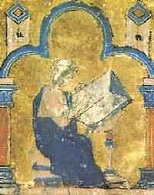

1175 On June 6 with Jerusalem-born William (Guillaume) (II) of Tyre (1127-86) becomes archbishop of Tyre (until Sept. 29, 1186). In June the Council of Gloucester sees Henry II restore Caerlon to Iorwerth ap Owain Want at the urging of Deheubarth lord Rhys ap Gruffydd. On Aug. 10 William I of Scotland confirms the Treaty of Malaise, er, Falaise in a big ceremony in York, at which Henry II makes him perform public homage and fealty both for his kingdom and his estates in England, promise to enforce the subjection of the Scottish Kirk to English jurisdiction, and promise to order his nobles and clergy to make personal submissions to Henry; from now on English kings claim to be overlords of Scotland; Henry considers the return of Northumberland and Cumberland to be case closed, and retains the right to choose William's wife, which allows him to keep him heirless into the 1180s. In Oct. Rory O'Connor of Ireland signs the Treaty of Windsor, recognizing Henry II as the Irish overlord, although he remains nominal high king of Ireland and king of Connacht outside Leinster, Meath, and Waterford, but all the Irish kings have to pay tribute to Henry II through O'Connor, and force Irishmen fleeing the conquered areas to return; haughty Normans begin to move into Ireland and lord it over the local "dogs"? William I the Cowardly Lion of Scotland does ceremonial allegiance to the haughty Norman king at York. Reuben II dies, and his son Reuben (Ruben) (Roupen) III (1145-87) becomes king #9 of Lesser Armenia in Cilicia (until May 6, 1187), remaining ever-friendly to the Crusaders. After Kilij Arslan II refuses to hand over some territory conquered from the Danishmends, the peace treaty with the Byzantines becomes kaput, and war is on. The Venetians make an alliance with the Normans against the Byzantines. Mohammed of Ghor begins a campaign of conquest in India, going on to subjugate and Islamize the entire Ganges plain W of Benares by his death in 1206. The O'Fergus brothers Gillebrigde and Uhtred of Galloway, Scotland rebel against William I (until 1185), and Donald Mac William, grandson of Duncan II starts a rising in N Scotland (until 1187). The bishop of Glasgow, Scotland receives the rights of a royal burgh. French-born (St.) Hugh of Lincoln (1135-1200) comes to England at Henry II's request and founds Witham Priory in Somerset in 1178-9 for monks settled by Henry II in penance for the murder of St. Becket, becoming the first of 10 Charterhouses (Carthusian monasteries) in England. William of Douglas is first mentioned in documents, becoming the first member of the Scottish Douglas (Gael. "dubh glas" = dark water) family in Lanark in the Vale of Douglas; his son Sir Archibald (Erkenbald) de Douglas (1213-40) becomes the first to attain knighthood. The Early Gothic Era in Architecture begins in France (ends 1250), featuring the pointed arch, ribbed vault, and flying buttress; it is originally called the "French Style", but in 1530 Giorgio Vasari calls it Gothic (barbaric), thinking it originated in or was fit only for barbaric Germany, and is not as cool as the revived Grecian style; N Europe is limited to brick because of the lack of bldg. stone, while Italy has plenty of marble, and France has white limestone from Caen; England has red sandstone and dark green Purbeck marble, but not much lumber because the primeval forests have been cut down, causing the development of hammer-beam roofs. The choral Passion is first performed. Poetry: Marie de France, Lanval; Arthurian poem about Sir Lanval, knight of the Round Table and a mysterious lady who gives him everything he wants until Guinevere falls for him and makes him choose; Ysopet ("Little Aesop"); 103 fables translated from English to French. Births: English archbishop of Canterbury (1233-40) (St.) Edmund Rich of Abingdon (d. 1240) on Nov. 20 in St. Edmund's Lane, Abingdon (7 mi. S of Oxford), Berkshire (later Oxfordshire); rich father, causing the epithet to be applied after his death; feast day: Nov. 16; canonized in 1246. HRE Roman king (1198-1209) and (1209-1215) Otto IV of Brunswick (d. 1218); son of Henry the Lion, duke of Bavaria, and Matilda, daughter of Henry II of England. Flemish Latin empress of Constantinople (1217-19) Yolanda of Flanders (Hainault) (d. 1219); daughter of Count Baldwin V of Hainault and Countess Margaret I of Flanders; sister of Baldwin I of Constantinople and Henry of Flanders; wife of Peter of Courtenay; mother of Marquis Philip of Namur (-1226), Robert of Courtenay (-1228), Marquis Henry of Namur (-1229), Baldwin II of Constantinople (-1273), Marchioness Margaret (Sybille) of Namur (1194-1217), Elizabeth of Courtenay (1199-1269), Yolanda de Courtenay, Eleanor, Marie de Courtenay (1204-28), and Agnes. French High Gothic architect Jean d'Orbais (d. 1231) in Orbais, Marne. Hungarian king (1205-35) Andras (Andrew) II (d. 1235); son of Bela III (1148-96); father of Bela IV (1206-70); ancestor of Edward III of England. English theologian-philosopher ("Doctor Irrefragibilis") ("Theologorum Monarcha") ("Fons Vitae") Alexander of Hales (Alexander Halensis) (d. 1245) in Gloucestershire. Deaths: Azerbaijan ruler Shams al-Din Eldiguz.
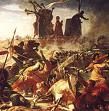


1176 On Apr. 20 Strongbow (b. 1130) dies in Dublin of an infection, leaving only infant daughter Isabel de Clare, 4th Countess of Pembroke and Striguil (1172-1220) as heir, causing Henry II to seize Leinster and place it in charge of a royal official. On May 29 the Battle of Legnano in Lombardy, Italy sees HRE Frederick I Barbarossa and his 3K troops incl. 2.5K knights defeated by 12K troops of the Lombard League led by Guido da Landriano (Landriani) (-1191) after his troops believe he has been KIA and flee, causing Frederick I to surrender in Venice, losing the support of the German princes, causing him to resort to diplomacy; Henry the Lion refuses to aid Barbarossa in his campaign against the Lombard League, and the latter doesn't forget it; the battle goes into Italian legend as a great V over foreign invaders, ending up mentioned in the Italian nat. anthem, and celebrated each year starting in 1935 on the last Sun. of May as the Palio di Legnano (originally the Sacra del Carroccio), while May 29 becomes the regional holiday of Lombardy. On Sept. 17 the Battle of Myriokephalon (Myriocephalon) in Phrygia sees the army of Seljuk sultan Kilij Arslan II of Rum defeat the Byzantine army of Manuel I in a valley as it advances on their capital of Konya; the Byzantine threat in the Anatolian plateau is kaput, and Manuel I Comnenus' wasted empire now begins a permanent decline, although he still has most of his army, but his health goes bad and he never again attacks the Turks, who keep moving W into Byzantine territory; meanwhile the Venetians force Manuel I to sign the Peace of 1176, renewing trade privileges and paying a heavy indemnity - and he carries the reminders of every glove that cut him till he cries out what? Mikhail Yuryevich is killed by the boyars of Rostov and Suzdal, and his brother Vsevolod III Yuryevich (Yurievich) (the Big Nest) (1154-1212) becomes grand prince of Vladimir (until 1212), going on to subjgate the boyars and raid the Volga people of Bulgaria, solidifying his rule, building up his capital Vladimir to the #1 city in Russia, and fathering 12 children with his Ossetian first wife Maria Shvarnovna (-1205) (incl. four future grand princes of Vladimir), earning him the name "Big Nest". After being ransomed from the gov. of Aleppo, former prince of Antioch (1153-61) Raynald (Reynald) (Reginald) of Chatillon (1125-87) marries Stephanie of Milly (1145-97), widow of Humphrey III of Toron, gaining possession of Kerak Castle and going on jihad against the pesky Muslims, harassing camel trains and attempting to attack Mecca in 1183, claiming he's trying to prevent Saladin from unifying the Muslim states - it's a mind over matter case? The Assize of Northampton extends use of the grand jury. Spanish immigrant rabbi Moses Maimonides (1135-1204) becomes the Ra'is al Yahud, the official rep. of the Jews to the Fatimid caliph; the position stays in the hands of his descendants until the early 15th cent. The first yearly Eisteddfod (eisteddfodau) (pr. eye-STETH-vode) ("sitting") of poets and musicians dressing up in Druid costumes is held at Cardigan Castle in Wales. Architecture: Ayyubid ruler Saladin begins the Citadel of Cairo (finished in 1184) on a promontory beneath the Muqattam Hills as the centerpiece of a wall around Cairo and Fustat anchored by the Nile River, which is still under construction in 1238; the citadel receives water from the 280-ft.-deep (85m) Well of Joseph (Well of the Spiral), with a 300-step stairway and a series of aqueducts. Novels: Walter Map (1140-1209) of Wales maps the Grail Cycle into the Arthurian legends in their present form. Pierre de Saint Cloud, Roman de Renard (OG "ragin" + "hart" = counsel + strong), the 1st vers. of the fables of Reynard the Fox, who lives in Maupertuis Castle with his wife Hermeline in the kingdom of King Leo the Lion with Isengrim the Wolf, Bruin the Bear, Baldwin the Ass, Tybalt the Cat et al. Births: Austrian duke (1198-1230) and Styrian duke (1194-1230) Leopold VI (the Glorious) (d. 1230); younger son of Leopold V (1157-94) and Helena (Ilona) of Hungary (1158-99) (daughter of Geza II and Euphrosyne of Kiev). Latin emperor of Constantinople #2 (1205-16) Henry of Flanders (d. 1216); son of Count Baldwin V of Hainaut and Margaret I of Flanders (sister of Philip of Alsace, count of Flanders); brother of Baldwin I (1172-1205). German mystic scholar (Jewish) Eleazar of Worms (Eleazar ben Judah ben Kalonymus) (Eleazar Rokeac) ("Perfumer)" (d. 1238) in Mainz; disciple of Judah ben Samuel of Regensburg. Deaths: English Norman knight Richard FitzGilbert "Strongbow" de Clare (b. 1130) on Apr. 20 in Dublin, Ireland. Japanese Yamato emperor #79 (1165-8) Rokujo (b. 1164) on Aug. 23.
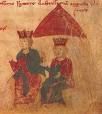
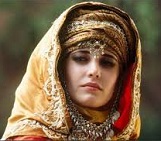
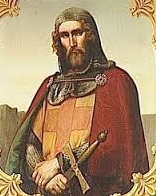


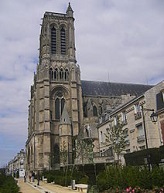
1177 In Jan. Anglo-Norman knight Sir John de Courcy (Courci) (1150-1219) invades Ulster (Ulaid), Ireland with 22 knights and 200 foot soldiers, defeating its last king Ruaidhrí Mac Duinnshléibhe in June, going on to build strongholds at Dundrum Castle in County Down and Carrickfergus Castle in County Antrum plus Benedictine and Cistercian abbeys, becoming known as its William the Conqueror. In Feb. big man William II the Good of Sicily (b. 1153) marries Joan Plantagenet (1165-99), daughter of Henry II of England and Eleanor of Aquitaine, and in July he sends a delegation to sign the Treaty (Peace) of Venice with defeated HRE Frederick I Barbarossa; too bad, to cement the deal he sanctions the marriage of his aunt Constance of Sicily (1154-98) (daughter of Roger II) to Frederick's son Henry (HRE Henry IV) (b. 1165), with her becoming his successor in case of his death without heirs, which later dooms the Norman kingdom of Sicily. In May after the Normans defeat the Ulaid of Ulster, Henry II holds a royal council in Oxford, dividing Leinster into three admin. areas, and with the approval of papal legate Cardinal Vivian, Henry II's 10-y.-o. youngest son Evil Prince John Lackland is made the first Lord of Ireland (ends 1542), requiring the principal Anglo-Norman landholders in Ireland to swear fealty to him; too bad, as a haughty Norman he soon begins treating the natives like serfs, giving large chunks of land to his friends, incl. Tipperary to his butler; a Norman earldom is established in Ulster (until 1333); he doesn't come to live in his new domain until 1185, and soon is recalled, leaving a group of haughty Normans behind to sow the seeds of centuries of ire?; the eternal battleground city of Belfast (modern-day pop. 340K/483K) on Belfast Lough, an inlet of the North Channel at the mouth of the Lagan River with a fine harbor is founded with a castle built to defend a ford over the river; 800+ years of direct English rule of Ireland begins. In June William "Longsword" Montferrat, Count of Jaffa and Ascalon (b. 1140) dies of malaria in Ascalon, and in Aug. his wife (since 1176) Queen Sibylla (Sibylle) (1160-90) (daughter of Amalric I, and first cousin of Henry II of England) bears Baldwin V (Baudoinet) of Jerusalem (Monteferrat) (1177-86), going on to become the love goddess of the Crusaders; on Easter 1180 after her first cousins Bohemond III of Antioch and Raymond III of Tripoli invade the kingdom of Jerusalem to force her to marry her to old fart Baldwin of Ibelin (1131-87) (older brother of Balian of Ibelin), they are headed off at the pass when her leprous brother Baldwin IV marries her to Guy de Lusignan (1150-94), brother of Jerusalem constable Aimery (Amaury) (Amalric) II of Lusignan (1154-1205) (son-in-law of Baldwin of Ibelin), a badass climber who pals with Muslim-killer Raynald of Chatillon while Sibylla wears the britches; In Oct. Baldwin IV also betrothes his half-sister 8-y.-o. Isabella I of Jerusalem (1172-1205) (daughter of Amalric I of Jerusalem and Maria Comnena) to Humphrey IV of Toron (1166-98), putting her in the hands of his mother Stephanie of Milly and her hubby Raynald of Chatillon in Kerak Castle. On July 24 after Frederick BArbarossa's big D at the 1176 Battle of Legnano, the Treaty (Peace) of Venice between Pope Alexander III, the N Italian city-states of the Lombard League, and HRE Frederick I Barbarossa sees Freddy renounce his antipope Callixtus III in return for his excommunication to be lifted; the Norman kingdom of Sicily take part in negotiations. On Sept. 21 after Pope Alexander III intervenes on Louis VII's side, Henry II and Louis VII sign the Treaty (Pact) of Ivry, a non-aggression pact, clearing the way for the Third Crusade. On Sept. 27 Pope Alexander III writes a letter to Prester John to be delivered by his physician Philip to the rumored Indian Christian king, the "Illustrious and Magnificent King of the Indies", giving him permission to build a shrine in Rome and join the Church; the letter carrier never returns. On Nov. 25 a Crusader force of 450 knights (80 Templars) and several thousand infantry under Baldwin IV, Raynald de Chatillon, and Odo de St. Amand defeats Saladin and his 9K-26K Ayyubids at the Battle of Montgisard, attacking after his army begins to disperse and securing a rare Latin V. Byzantine emperor Manuel I scores a V against the Seljuks in Bithynia, and John Vatatzes drives them out of the Meander Valley. Bohemond III of Antioch and Count Philip of Flanders (who arrived on pilgrimage) unsuccessfully siege Harem (Harim) in N Syria on the route between Antioch and Aleppo. Duke Henry II Jasomirgott of Austria dies, and Leopold V (the Virtuous) (1157-94) becomes Babenberg duke of Austria (until 1194). Mean Old Mieszko III is driven out, and his brother Casimir II the Just (1138-94) is elected ruler of Poland by the nobles in return for privileges. After helping lead the Norman invasion of Ireland, Anglo-Norman knight Miles de Cogan (-1182) and Cambro (Welch)-Norman knight Robert FitzStephen (-1183) are jointly granted the kingdom of Cork "from Lismore to the sea", excluding the city of Cork, going on to make raids in Connaught. Georgian nobles revolt against George III (b. 1184) in the name of Prince Demna (Demetre) (1154-78) (son of George III's late elder brother David V), gathering an army of 30K and holding up in Lore until royal forces kick their butts and blind and castrate the pretender, after which George III appoints his daughter Tamar next year as heir apparent and co-ruler. The Cham raid and sack Angkor (Cambodia), which is beset with internal problems over succession. Architecture: The Schottenkirche (Scottish or New Irish Church) is built in Vienna by the Irish Benedictines (finished 1880); Adolf Hitler is later fond of painting it. The Gothic Soissons Cathedral in Soissons, France is begun; the choir (based on Chartres Cathedral) is finished in 1211, and the nave later in the 13th cent., with the single W tower imitating those of Notre-Dame de Paris built in the mid-13th cent. Nonfiction: Moses Maimonides (1135-1204), Mishneh Torah; summary in Hebrew of the Jewish Torah. Births: German king (1198-1208) and duke of Swabia (1196-1208) Philip of Swabia (d. 1208); 5th and youngest son of HRE Frederick I and Beatrix (daughter of Count Renaud III of Burgundy); brother of HRE Henry VI; rival of HRE Otto IV. French countess of Champagne Blanche (Blanca Sanchez) of Navarre (d. 1229); youngest daughter of Sancho VI of Navarre (1132-94) and Sancha of Castile (1139-79). Deaths: Austrian duke #1 (1156-77) Henry II Jasomirgott (b. 1107) on Jan. 13. Scottish Stewart (Stuart) Dynasty founder Walter Stewart (b. ?).


1178 On June 30 after HRE Frederick I Barbarossa and Pope Alexander III sign the Peace of Venice, Frederick I is crowned king of Burgundy at Arles by Alexander III, who allegedly places his foot on the neck of the prostrate emperor, which later pisses-off pope-hating Protestants. On Aug. 29 after being seiged in Vierbo by Christian of Mainz, Antipope Callistus III submits to Pope Alexander III at Tusculum, who appoints him gov. of Beneventum, and no new antipope is elected by partisans for a year; meanwhile in Sept. Alexander III, according to the terms of the Peace of Venice convokes an ecumenical council at the Lateran for next year's Lent (Mar.). Henry II selects five justices from the Curia Regis to form a separate tribunal, becoming the beginning of the royal court system. The first English invasion of Connaught, Ireland is repulsed, with the town of Galway (Gael. "Dun Gaillimhe" = fort at the mouth of the Gallimhe) (founded in 1124 by Connacht king Tairrdelbach Ua Conchobair) on the Corrib River in Galway Bay (modern-day pop. 80K) becoming an anti-English citadel for cents., nicknamed "the city of the tribes" for its 14 merchant families. Mecklenburg bishop Berno visits Rome to attend the Third Lateran Council, allowing the pesky pagan Wends to revolt against the Roman Catholic Germans and destroy Doberan Monastery, killing 78 inmates; it is rebuilt in 1186. Danish bishop of Roskilde (since 1158) Absalon (Axel) (1128-1201) becomes archbishop of Lund (until 1201), going on to introduce canon law in Denmark, attempt monastic reforms, and become influential in Danish politics. Muslim sailors discover America ("Mu-Lan-Pi")? Architecture: William of Sens is injured during the bldg. of the new Canterbury Cathedral, and is replaced by William the Englishman (-1214), who decides that the stones shipped in from Caen aren't enough, and furnishes the interior with marble from Purbeck and Dorset. His 1174 capture being attributed to the intervention of martyr St. Thomas Becket, William I the Lion founds Arbroath (Aberbrothock) Abbey in his honor, and richly endows it; the abbot allegedly places a bell on Bell Rock (Inchcape), a reef of red sandstone rocks in the North Sea 12 mi. to the SE which "moved by the sea, giving notice to the saylers of the danger". The 22-arch 920m x 4m Avignon Bridge in France is begun (ends 1185), where later people "dance round and round". The First Rialto Bridge over the Grand Canal of Venice is designed, built of wood, needing to be rebuilt 2x by the end of the 13th cent. Nonfiction: Richard Fitznigel, Dialogus de Saccario; treatise on the financial admin. of England. Births: Spanish king of Arago and count of Barcelona (1196-1213) Peter II (the Catholic) (d. 1213) in July in Huesca; son of Alfonso II of Aragon (1152-96) and Sancha of Castile (1154-1208). Icelandic "Prose Edda" poet-historian-politician Snorri Sturluson (Sturlson) (d. 1241).
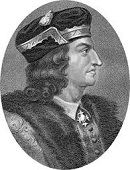
1179 On Mar. 5-19 the Third Lateran (11th Ecumenical) Council, called by Pope Alexander III and attended by 302 bishops condemns the Waldensians and Albigenses for "errors and impieties", and promulgates 27 canons, incl. setting minimum ages for church offices (25 for benefices involving the care of souls, 30 for the episcopate), forbidding clerics to receive women into their houses or to enter a nunnery without a reason, and forbidding tournaments and furnishing Saracens with materials to build galleys, vesting the exclusive right of papal election in a two-thirds majority vote of the College of Cardinals (Lat. "hinges"); it also forbids Christian midwives and nurses from ministering to Jews. On May 23 after he conquers lands to the S to which no other Christian monarch had claim, Pope Alexander III issues the bull Manifestis Probabum, officially recognizing Alfonso I Henriques as the first king of the independent Roman Catholic kingdom of Portugal and no longer a vassal of the kingdom of Leon. The town of Durango in the Basque country of N Spain (modern-day pop. 29K) is first documented as a suzerain of the Kingdom of Navarre. On June 10 a Latin army led by Baldwin IV and Raymond of Tripoli is defeated by the Ayyubid army Saladin at the Battle of Marj Ayyun (Ayyoun); Templar master Odo of St. Armand is blamed for his rash attack. On Sept. 29 Cardinal Lando (Lanzo) Sitino of Sezza (from a noble Lombard family) is elected Antipope Innocent III (-1180) by the Roman barons with the support of HRE Frederick I Barbarossa, and the brother of antipope Victor IV gives him the fortified castle of Palombara to hole-up in; after Pope Alexander III's man Cardinal Hugo bribes his guards to give him up, he is imprisoned in the Monastery of La Cava next Jan., where he dies. On Nov. 1 after suffering a stroke, Louis VII of France has his son Philip (Philippe) II Augustus (1165-1223) crowned as coregent in the Cathedral of Notre Dame in Rheims, which becomes the custom until the time of Charles X (1522); under his reign there is a gigantic expansion in the power of the French monarchy. The Treaty of Cazola, signed by Alfonso VIII of Castile and Alfonso II of Aragon agrees to a future partition of Al-Andalus. Count Henry I of Champagne, who had gone to Jerusalem with French knight-relatives Peter of Courtenay (brother of Louis VII), Philip de Dreux et al. is captured while returning overland by Kilij Arslan II of Rum, who forces Byzantine emperor Manuel I to pay his ransom, after which he soon dies (1181). William I the Lion makes the first of several expeditions into N Scotland to fight the rebels, building new castles on the N side of Beauly and Cromarry Firths, and chartering the city of Aberdeen 130 mi. NW of Edinburgh between the estuaries of the Don and Dee Rivers (modern-day pop. 196K/214K) as a royal burgh, where it goes on to become known as the "Silver City by the Sea" and "Granite City", becoming the main city of N Scotland. Births: French count of Champagne (1197-1201) Theobald III (d. 1201) on May 13 in Troyes; youngest son of Henry I of Champagne and Marie of France; younger brother of Henry II of Champagne; husband (1199-) of Blanche of Navarre (1177-1229); father of Theobald IV (1201-53). Arab geographer-biographer (Sunni Muslim) (freed Greek slave) Yaqut al-Hamawi (Yaqut Shihab al-Din ibn-Abdullāh al-Rumi al-Hamawi) (d. 1229) in Constantinople. French Crusader lord (1204-36) John of Ibelin, "the Old Lord of Beirut" (d. 1236); son of Balian of Ibelin (-1193), Lord of Nablus and Ibelin Castle in Jerusalem and Maria Comnena (1154-1217) (widow of Amalric I of Jerusalem); half-brother of Queen Isabella of Jerusalem (1172-1205); uncle of John of Ibelin (1215-66). Spanish queen consort of Leon (1197-1204) and queen of Castile and Toledo (1217) Berengaria (the Great) of Castile (d. 1246); eldest child of Alfonso VIII of Castile; wife (1197-1204) of Alfonso IX of Leon; mother of Ferdinand III of Castile (1199-1252). Deaths: German mystic nun St. Hildegard of Bingen (b. 1098) on Sept. 17 in Bingem am Rhein, Rhine Palatinate.